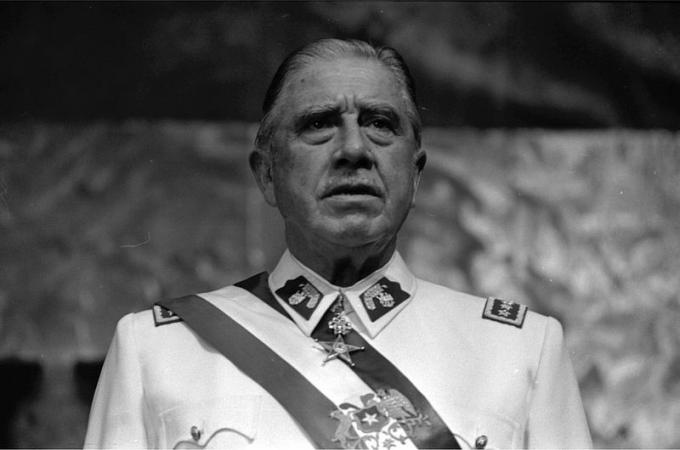Latin American countries have, since the second half of the 20th century, gone through dictatorial governments installed after coups d'état. Some of them continue under this type of regime, but most managed to democratize their politics, like Brazil and Chile.
In this article, you will learn a little more about the period of Military Dictatorship in Chile, including its beginning process, main characteristics and who was Augusto Pinochet, its main leader.
see more
Scientists use technology to unlock secrets in ancient Egyptian art…
Archaeologists discover stunning Bronze Age tombs in…
Like Brazil, Chile went through a military dictatorship that caused a major democratic setback in the country. In Chile, the dictatorship lasted almost 17 years (from September 1973 to March 1990). During this period, Chile was governed by General Augusto Pinochet.
Dictatorship in Chile lasted for almost 17 years, starting in September 1973 and ending in March 1990. During this entire period, the country was governed by Augusto Pinochet. Understand how the beginning of the regime was from its historical context.

The Chilean economy, in the early 1970s, was heavily dependent on international investments, especially multinationals. Despite the successful industrialization process, most of the population suffered from poverty.
In politics, instability was no different given the division of Chile between capitalists and socialists due to the Cold War. The former advocated reforms of the current political order and moderate reforms aligned with the United States.
The socialists, in turn, intended to implement radical reforms based on a revolution that would break economic structures and lead the country to this type of government. In this scenario, Salvador Allende, a socialist, was elected president.
Support in his campaign came from left-wing parties that formed the Popular Unity. Allende's intention was to combat social inequality and leverage the economy through socialist reforms.
Among the measures proposed by the president-elect were agrarian reform and the nationalization of companies and mineral resources, such as copper. Obviously, the proposals went against the Armed Forces, the middle class, businessmen and the United States.
With a strong influence on Chile, the land of Uncle Sam did not want the country to align itself with the Soviet Union, its adversary in the Cold War, through Allende's socialist measures. To make matters worse, the Chilean economic crisis worsened in 1973.
Inflation hit 300% and GDP plunged. From then on, there were high levels of dissatisfaction with the Allende government, creating the right environment for the Military Coup that would take place in the same year.
Salvador Allende's government was overthrown on September 11, 1973 through the Coup d'état promoted by the Armed Forces. The political seat, the Palacio de la Moneda, was bombed by the army. In front of the painting, Salvador Allende ended up committing suicide.
Then began the military dictatorship in Chile, a period that lasted for almost 17 years in the hands of General Augusto Pinochet. His motto was national reconstruction, but he promoted neoliberal reforms advised by economists known as the Chicago Boys.
As in Brazil, the dictatorial regime presented totalitarian characteristics with fierce persecution of its opponents. In the economy, the population suffered from the increase in social inequality.
The main hallmark of the Pinochet government was violence. It is estimated that there are over 3,000 dead or missing, extreme torture of prisoners and over 200,000 forcibly exiled. Check out the main points of this period:
Pinochet's government, like dictatorships around the world, was totalitarian and violent. Its practices generated a negative image of the country, causing its isolation through opposing pressures from other countries and international institutions.
In 1980, Augusto Pinochet legalized his dictatorial rule through the promulgation of a new constitution. The consequence was the mobilization of groups organized by the government, inside and outside the country.
In the late 1980s, several diplomatic relations with Chile were severed in response to the general's truculent government. If the situation was frowned upon externally, the Chilean people no longer tolerated Pinochet's social inequalities, problems and violence.
Chile then went through a national plebiscite in 1988. The movement was foreseen by the Constitution and allowed the population to opt for Pinochet to remain in power (yes) or new elections the following year (no).
In the context experienced by Chileans, the vast majority voted for the general to leave and, in 1989, direct elections were held. The Coalition of Parties for Democracy elected Patricio Aylwin, taking office on March 11, 1990. End of dictatorship in Chile.
During the regime, the Directorate of National Intelligence (DINA) was created, led by Manuel Contreras. The agency had the power to detain and confine people opposed to General Pinochet's government. With that, they practiced acts of kidnapping, torture and murder.
In 1993, three years after the beginning of civilian government, Contreras was prosecuted by the courts. In 2008, he was sentenced to life imprisonment for the murder of General Prats and his wife in Buenos Aires in 1974.
In 2009, Chilean justice ordered the arrest of 120 military and former secret service agents for violating human rights during the dictatorship. Augusto Pinochet, in turn, died in 2006 after dozens of lawsuits.
Check also: